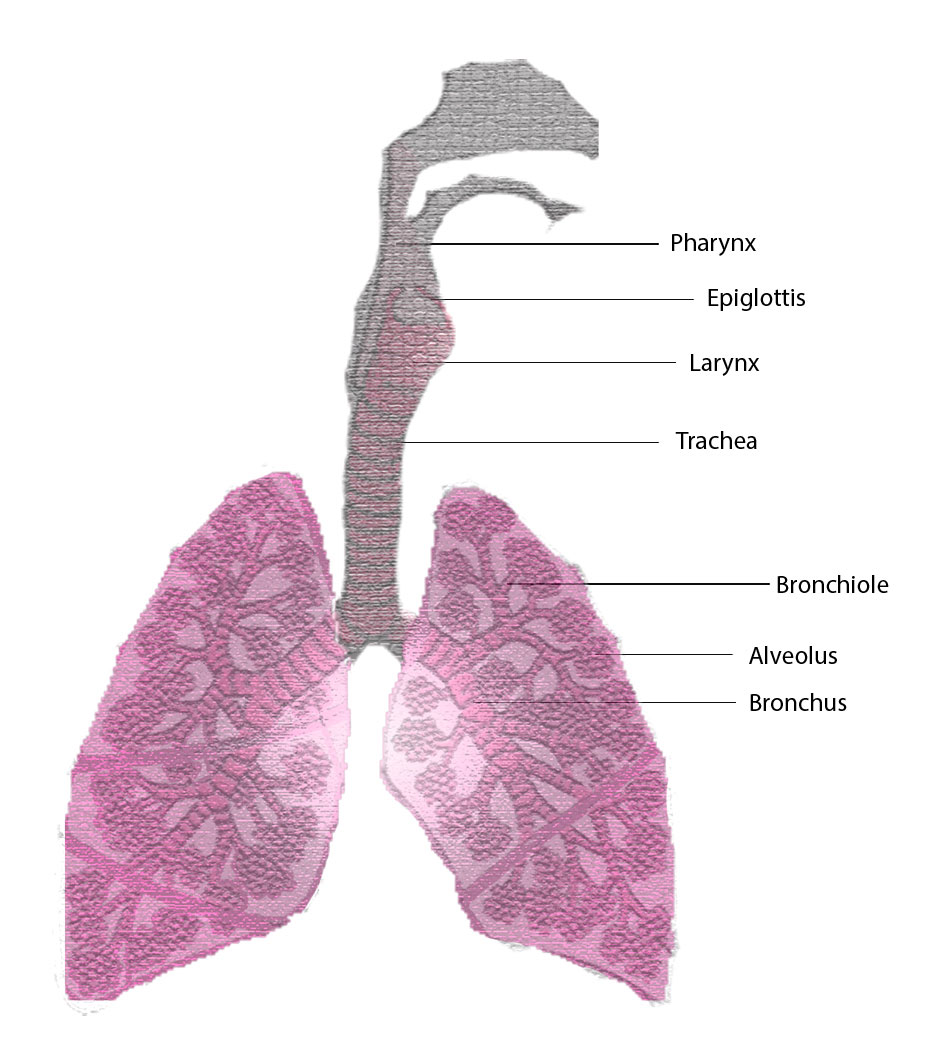Asthma is a chronic disease of the airways in the respiratory system. In other languages and dialects, it is also known as ‘lelah’, ‘semput’ and ‘penat’ in Malay, and ‘Chei Har’ in Chinese. However these terms tend to be used loosely with other respiratory conditions.
How does your respiratory system function?
The respiratory system brings in oxygen rich air and brings out carbon dioxide. The airway in the respiratory system is like a long tube. It starts from the nostril, down to the pharynx, larynx and down to the trachea or better known as the wind pipe which branches out into smaller airways in the two lungs. These smaller airways are known as the bronchioles. The gas exchange occurs at the bronchioles.
The inner wall of the tube is lined by mucusal lining which have fine hair called cilia. It also has a layer of smooth muscle.
What is asthma?
- It is a disease of the lung.
- It is caused by chronic inflammation of the airways.
- Inflammatory process is part of the immune system of our body. It functions as a defense mechanism. It protects our body from irritants that we breathe in every day.
- In people who have asthma, the airway is sensitive to some inhaled substances. This is called hyper-responsiveness. This causes inflammation to occur.
- The inflammation causes the mucosal lining to swell, more mucus is produced acting as a mucus plug and the muscle contracts known as bronchospasm. All these cause the lumen of the airway to narrow and thus causing difficulty in breathing.
Who gets asthma?
You are at risk of becoming an asthmatic if:
- Someone in your family have asthma too ( hereditary)
- You have a bad chest infection during childhood
- Someone in your family have atopy or strong allergy reactions which means you may inherit the hyper-responsiveness reaction to allergance.
- Chronic exposure to irritants.How do you know if you are an asthmatic?
You may have bronchial asthma if:
- You have recurrent episodic cough with wheezing
- Tightness of chest and difficulty in breathing which comes suddenly
- You have a family history of asthma or allergy
- You developed these symptoms if you are exposed to certain irritants or conditions
Discuss with your doctor and she will help to confirm if you are an asthmatic. The doctor will ask you a detail history of your attacks. For example she will help you in identifying what triggers your attack and the pattern of your attack. She will do thorough physical examinations especially of your lungs. Sometimes you may need a chest x-ray or respiratory function test.
How do you feel during an asthmatic attack?
When you have an acute exacerbation of asthma, which is also called an asthmatic attack you will have:
- Cough. The cough is a normal reflex to clear the obstructed airway. That is why in asthmatic it is not encouraged to take a cough mixture unless advised by your doctor.
- Difficulty in breathing or shortness of breath. The narrow air way will cause you to have difficulty in breathing.
- Noisy breathing or wheezing as you breathe through a narrow airway with a lot of mucus.
- Chest tightness.
- Others will notice that you are using a lot of effort to breath. Your nasal alae will flare, the muscle of the neck will be prominent and the space in between your ribs will be pulled in as you breathe.
When the attack is bad you may even have difficulty to speak in full sentences. In this situation you must see a doctor immediately for treatment.
Is there a cure for Asthma?
Bronchial asthma is a chronic disease just like hypertension and diabetes. This means once you are diagnosed to have asthma you will need treatment throughout your life. It can’t be cured.
Good news!! The good news is you can control your asthma and you can live a normal live like any other people.
How do you do that?
- Understand your problem. Discuss with your doctor yourself although you might come with your parents during the consultation. Get yourself involved in the management of your asthma.
- Know your trigger. Know what causes your attack. It maybe the exposure to cigarette smoke, extreme cold or hot, stress, after a heavy exercise or may be some food/coloring.
- Visit your doctor regularly. Discuss with him/her about your problems and create an asthma action plan together.
- Know your medications. Know what, when and how frequent to take them and why you need to take them.
- Be compliance to your medications.
What are the common triggers for asthmatic attacks?
| Last Reviewed | : | 20 December 2012 |
| Content Writer | : | Dr. Salmah bt. Nordin |
| Accreditor | : | Dr. Nik Rubiah bte. Nik Abdul Rashid |










